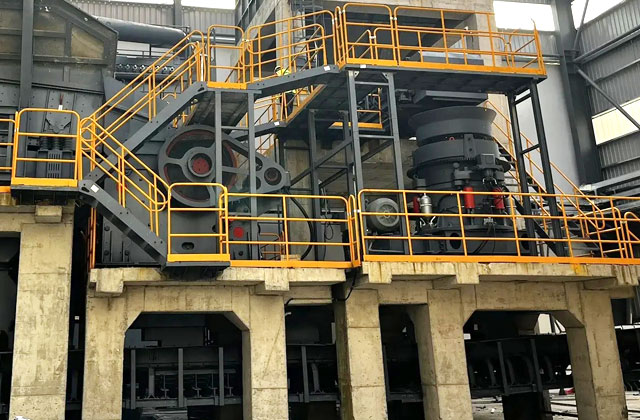A primary crusher designed for calcite, a common mineral used in various industries, typically features a robust and efficient design to handle the mineral’s specific properties. Calcite is a relatively soft material with a Mohs hardness of around 3, which influences the design and capacity of the crusher.

Primary Crusher for Calcite
Types of Primary Crushers:
- Jaw Crushers: These are the most common type of primary crushers for calcite. They use compressive force to break down the mineral by squeezing it between two plates. A jaw crusher’s capacity can vary based on the model and size, but for calcite, a capacity of up to 1,000 tons per hour is common.
- Gyratory Crushers: These crushers use a gyrating motion to break down material. They are suitable for high-capacity operations and can handle large volumes of calcite. Capacities can exceed 2,000 tons per hour for larger models.
- Impact Crushers: These crushers use impact force to crush calcite. They are suitable for medium to high-capacity operations and can handle material up to a certain size before further processing.
Capacity Considerations:
- Feed Size: The capacity of a primary crusher is influenced by the size of the feed material. For calcite, which can vary in size from fine to coarse, crushers are designed to handle different feed sizes.
- Throughput: The throughput of a primary crusher is determined by its design and operational parameters. For calcite, crushers with a capacity of 200 to 500 tons per hour are typical, though larger models can handle higher capacities.
- Reduction Ratio: The reduction ratio is the ratio of the feed size to the product size. For calcite, primary crushers are designed to achieve a reduction ratio that suits the requirements of downstream processing.
Operational Efficiency:
- Crusher Design: The design of the primary crusher impacts its efficiency and capacity. Features such as adjustable settings, efficient crushing mechanisms, and durable materials contribute to its performance.
- Maintenance: Regular maintenance is crucial for maintaining the capacity and efficiency of a primary crusher. For calcite processing, ensuring that the crusher is in good working condition helps to maintain optimal throughput and reduce downtime.
Choosing the Right Crusher:
- Material Properties: The specific properties of calcite, such as hardness and abrasiveness, influence the choice of the primary crusher. For calcite, jaw and impact crushers are commonly used due to their suitability for handling soft to medium-hard materials.
- Capacity Requirements: The required capacity of the primary crusher depends on the scale of the operation and the desired throughput. It is important to select a crusher that matches the capacity needs of the operation.
In summary, primary crushers for calcite are designed to handle the material’s specific properties and capacity requirements. Jaw crushers, gyratory crushers, and impact crushers are common types used for calcite processing, with capacities ranging from 200 to over 2,000 tons per hour depending on the model and application.
